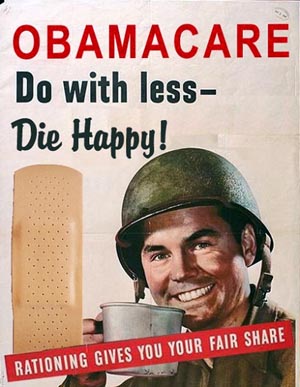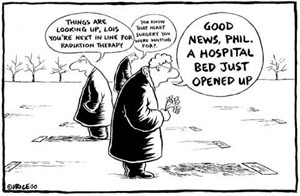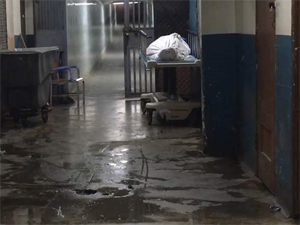 The reported success of the Affordable Care Act (ACA or ObamaCare) is based on enrollment. Millions more have “coverage.” Similarly, the predicted disasters from repeal have to do with loss of coverage. Tens of thousands of deaths will allegedly follow.
The reported success of the Affordable Care Act (ACA or ObamaCare) is based on enrollment. Millions more have “coverage.” Similarly, the predicted disasters from repeal have to do with loss of coverage. Tens of thousands of deaths will allegedly follow.
Where are the statistics about the number of heart operations done on babies born with birth defects, the latest poster children? How about the number of babies saved by this surgery, and the number allowed to die without an attempt at surgery — before and after ACA?
 Note that an insurance plan doesn’t do the operation. A doctor does. The insurer can, however, try to block it.
Note that an insurance plan doesn’t do the operation. A doctor does. The insurer can, however, try to block it.
Also missing are figures on the number of courses of cancer chemotherapy given, or not given, or the time from diagnosis to death in cancer patients before and after ACA. Five-year survival of cancer patients in the U.S. is generally better than in countries that have universal coverage, the type of plan progressives want to import. Again, the insurance plan isn’t medicine. You can get medicine without insurance, and if you have insurance it might refuse to pay.
There are selected comparisons of change in mortality rates in states that did or did not expand Medicaid (such as New York vs. Pennsylvania). On the other hand, mortality did not decrease in one state (Oregon). These estimates—guesstimates really, are based on the weakest type of data, and the differences may have nothing to do with Medicaid. Maybe it was better AIDS treatments. We hope that the FDA does not use evidence this poor to evaluate drugs.
But what effect did ObamaCare have on overall U.S. mortality?

Class Warfare: Workers vs. Looters by Dan Mitchell
Between 2014 and 2015, U.S. mortality rates increased for the first time in decades. This primarily affected less-educated whites. Is ObamaCare the cause? There are many factors involved, drug abuse probably being the most important. But I suspect that if repeal had happened in 2012 or 2013, it would have been blamed.
We hear many plaints about medical bankruptcies. These happen because patients got their treatment, and then got a bill. Often the bills are outrageous, and hospitals may be ruthless in collection efforts. That is a serious problem, but it is not caused by lack of universal coverage. And remember, bankruptcy is a way out of debt. Creditors take a haircut. In contrast to medical debts, student loans cannot be discharged by bankruptcy but follow a person for life.
 Medicaid expansion may have alleviated fears of medical bankruptcy, but we don’t know that more patients got treatment. In single-payer Canada, there is no fear of a medical bill. But there might not be any treatment either.
Medicaid expansion may have alleviated fears of medical bankruptcy, but we don’t know that more patients got treatment. In single-payer Canada, there is no fear of a medical bill. But there might not be any treatment either.
We do know that after Medicaid expansion “nonprofit” hospitals are banking windfall profits, while charity is essentially gone. In Oregon, Medicaid enrollment increased from 626,000 in 2013 to 1,056,000 in 2016. Providence Health & Services now has the biggest pile of cash reserves of local companies—$5.8 billion vs. $3 billion for Nike. Hospitals are using the cash to buy new assets, not to lower prices or improve quality. They pay their executives like a Fortune 500 company.
 The experts advocating for universal care know very well that resources are limited, and that spending (“costs”) must be contained. They also understand that the burgeoning bureaucracy and its minions and retainers must be well paid. So the answer is to cut services.
The experts advocating for universal care know very well that resources are limited, and that spending (“costs”) must be contained. They also understand that the burgeoning bureaucracy and its minions and retainers must be well paid. So the answer is to cut services.
Some plans “incentivize” doctors to make more money by skimping on care. Others call for a “global budget”—the deliberate creation of scarcity. When the money is gone, treatment is canceled. There will be fewer beds, fewer CT scanners, fewer drugs, and fewer doctors. But all will be fair. No rationing by price, just by waiting lines, political pull—and death. There will be no medical bills to pay after a service, if you get any service. Only taxes in advance, service or no service.
That’s why the universal care advocates count enrollees, not the number of services, and constantly harp on “excessive” treatment, even while planning to make patients wait months for an appointment.

Dr. Jane M. Orient
About the author: Jane M. Orient, M.D.obtained her undergraduate degrees in chemistry and mathematics from the University of Arizona in Tucson, and her M.D. from Columbia University College of Physicians and Surgeons in 1974. She completed an internal medicine residency at Parkland Memorial Hospital and University of Arizona Affiliated Hospitals and then became an Instructor at the University of Arizona College of Medicine and a staff physician at the Tucson Veterans Administration Hospital. She has been in solo private practice since 1981 and has served as Executive Director of the Association of American Physicians and Surgeons (AAPS) since 1989. She is currently president of Doctors for Disaster Preparedness. Since 1988, she has been chairman of the Public Health Committee of the Pima County (Arizona) Medical Society. She is the author of YOUR Doctor Is Not In: Healthy Skepticism about National Healthcare, and the second through fourth editions of Sapira’s Art and Science of Bedside Diagnosis published by Lippincott, Williams & Wilkins. She authored books for schoolchildren, Professor Klugimkopf’s Old-Fashioned English Grammar and Professor Klugimkopf’s Spelling Method, published by Robinson Books, and coauthored two novels published as Kindle books, Neomortsand Moonshine. More than 100 of her papers have been published in the scientific and popular literature on a variety of subjects including risk assessment, natural and technological hazards and nonhazards, and medical economics and ethics. She is the editor of AAPS News, the Doctors for Disaster Preparedness Newsletter, and Civil Defense Perspectives, and is the managing editor of the Journal of American Physicians and Surgeons.
